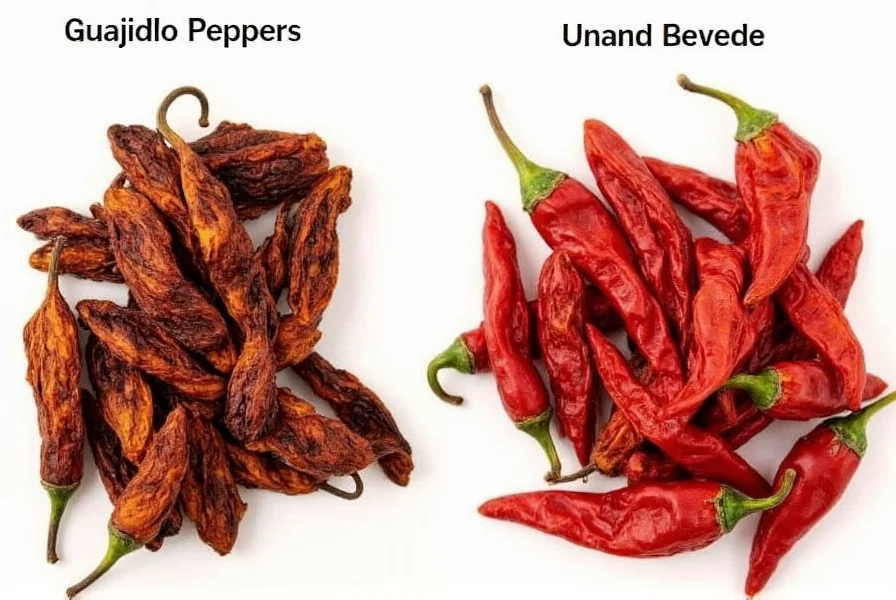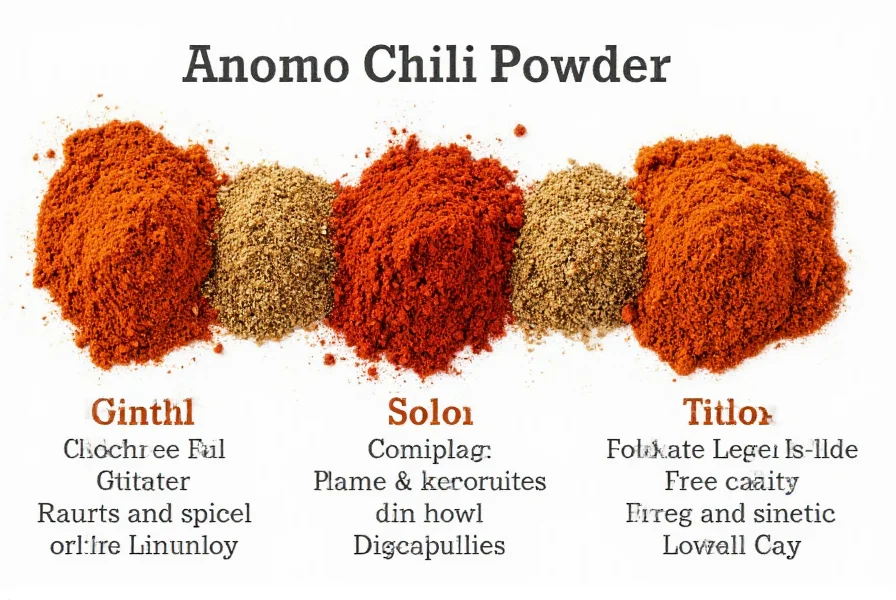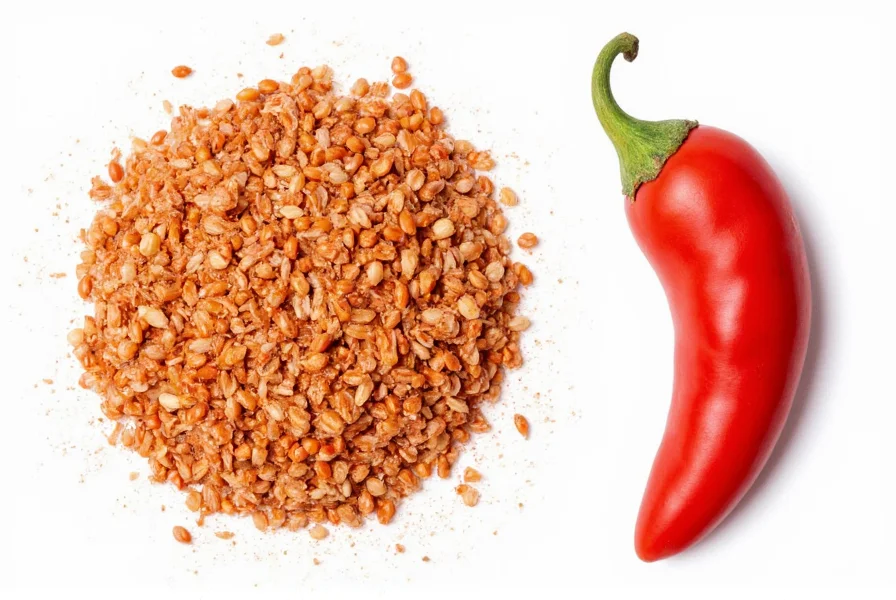Understanding ancho chili substitutes starts with knowing what makes this ingredient special. Ancho chilies are dried poblano peppers with a mild heat level (1,000-2,000 Scoville units) and complex flavor profile featuring notes of dried fruit, coffee, and subtle earthiness. When your recipe calls for ancho chili but you're out of stock, choosing the right substitute prevents your dish from losing its authentic Mexican character.
What Makes Ancho Chili Unique
Ancho chilies provide more than just mild heat—they deliver depth and complexity essential to traditional Mexican sauces like mole poblano. Their distinctive characteristics include:
- Mild heat level (significantly milder than jalapeños)
- Rich, fruity flavor with hints of raisin and plum
- Earthy undertones with subtle smokiness
- Thick flesh that rehydrates well for sauces
- Deep reddish-brown color that enhances visual appeal
When seeking ancho chili replacement for mole sauce, preserving these flavor dimensions becomes critical. The wrong substitute can throw off your entire dish's balance.
Top Ancho Chili Substitutes Ranked
| Substitute | Heat Level | Flavor Profile | Best For | Substitution Ratio |
|---|---|---|---|---|
| Guajillo peppers | Mild (2,500-5,000 SHU) | Tangy, berry-like, slightly floral | Salsas, adobos, marinades | 1:1 by weight |
| Mulato peppers | Mild (2,500-5,000 SHU) | Sweeter, chocolate notes, less fruity | Mole sauces, stews | 1:1 by weight |
| Pasilla peppers | Mild-Medium (1,000-2,500 SHU) | Berry-like, grassy, earthy | Mojo sauces, braises | 1:1 by weight |
| New Mexico chilies | Mild (500-7,000 SHU) | Earthy, slightly sweet, less complex | Enchilada sauces, stews | 1:1 by weight |
| Ancho chili powder | Mild (800-1,000 SHU) | Concentrated ancho flavor | Dry rubs, spice blends | 1 tsp powder = 1 dried pepper |
Detailed Substitute Analysis
Guajillo Peppers: The Closest Flavor Match
Guajillo peppers offer the most comparable flavor profile to ancho chilies with their mild heat and complex fruity notes. While anchos have deeper coffee-like undertones, guajillos provide a brighter, slightly more acidic profile with berry and tea-like qualities. When using guajillo as your ancho chili pepper substitute in recipes, rehydrate them in hot water for 20 minutes before blending into sauces. They work exceptionally well in adobo sauces and salsas where their tanginess enhances other ingredients.

Mulato Peppers: The Ancho's Close Relative
Mulato peppers come from the same poblano pepper family as anchos but are left on the plant longer before drying. This extended maturation creates a sweeter, more complex flavor with subtle chocolate notes. When substituting mulato for ancho chili in mole recipes, you'll notice a richer, slightly sweeter result that still maintains the essential Mexican character. Use them in equal quantities for the most authentic substitute for ancho chili in mole.
Pasilla Peppers: The Versatile Alternative
Pasilla peppers (not to be confused with fresh chilaca peppers) provide a good alternative when guajillo or mulato aren't available. They have a similar mild heat level but feature more pronounced berry-like notes and less of the earthy depth found in anchos. Pasillas work particularly well in dishes where you want a fruitier profile, such as certain moles or braised meats. For the best results with this ancho chili substitute for stew, combine with a small amount of chipotle for depth.
Practical Substitution Guidelines
When replacing ancho chili in your recipes, consider these professional chef recommendations:
- For dried peppers: Use equal weight substitutions rather than counting individual peppers, as size varies significantly
- For sauces: Always rehydrate dried peppers in hot water (not broth) to maintain flavor purity
- For spice blends: Combine sweet paprika (2 parts) with cumin (1/2 part) and a pinch of cayenne for a quick ancho powder substitute
- For smoky depth: Add 1/8 teaspoon smoked paprika per pepper when using non-smoked alternatives
- For heat adjustment: Reduce substitute quantity by 25% if using hotter peppers like New Mexico chilies
Avoiding Common Substitution Mistakes
Many home cooks make critical errors when substituting for ancho chili that compromise their dishes:
- Using only cayenne: This adds heat without the necessary fruitiness, creating an unbalanced flavor
- Overcompensating with liquid smoke: Anchos have natural subtle smokiness—artificial smoke flavors dominate dishes
- Ignoring rehydration time: Under-soaked peppers create gritty textures in sauces
- Mixing incompatible substitutes: Combining chipotle (smoky) with New Mexico (earthy) creates flavor confusion
For authentic results with your ancho chili alternative for Mexican cooking, focus on matching the fruitiness first, then adjust heat and earthiness separately.
Storage Tips for Substitute Ingredients
Proper storage maintains the quality of your ancho chili alternatives:
- Store dried peppers in airtight containers away from light and heat
- Add a silica packet to prevent moisture absorption
- Whole dried peppers last 1-2 years; ground spices lose potency after 6 months
- Freeze reconstituted peppers in ice cube trays for future sauce use
- Toast whole dried substitutes briefly before grinding to enhance flavors
When to Choose Powder Over Whole Peppers
Understanding when to use ancho chili powder substitute options versus whole dried peppers makes a significant difference in your cooking:
- Use powder when: Making dry rubs, quick sauces, or when time is limited
- Use whole peppers when: Creating traditional moles, complex sauces requiring layered flavors
- Best powder blend: 3 parts sweet paprika, 1 part cumin, 1/2 part garlic powder, pinch of oregano
- Conversion: 1 teaspoon ancho powder equals one medium dried ancho pepper

Conclusion: Making the Right Choice
Selecting the perfect substitute for ancho chili depends on your specific recipe and available ingredients. For traditional Mexican dishes like mole poblano, guajillo or mulato peppers provide the closest approximation. When time is limited, a carefully crafted spice blend using sweet paprika and complementary spices offers a practical solution. Remember that successful substitution focuses on matching the fruitiness first, then adjusting heat and earthiness to maintain the dish's authentic character. With these guidelines, you can confidently adapt any recipe requiring ancho chili without compromising on flavor.
Frequently Asked Questions
Can I use regular chili powder instead of ancho chili?
Standard chili powder makes a poor direct substitute as it typically contains cumin, garlic, and oregano that alter your dish's flavor profile. For a better ancho chili powder substitute, create a blend of 3 parts sweet paprika, 1 part cumin, and a pinch of cayenne pepper to approximate ancho's mild heat and fruitiness without additional seasonings.
What's the best ancho chili substitute for someone who can't find Mexican dried peppers?
When authentic Mexican dried peppers aren't available, the most accessible substitute for ancho chili in the UK or other regions is a combination of sweet paprika (for color and mild flavor) with a small amount of chipotle powder (for smokiness). Use 2 teaspoons sweet paprika plus 1/4 teaspoon chipotle powder to replace one dried ancho pepper, adjusting to taste.
How do I adjust recipes when substituting chipotle for ancho chili?
Chipotle peppers are significantly hotter (2,500-8,000 SHU) and smokier than anchos. When using chipotle as an ancho chili substitute for spicy dishes, reduce the quantity to one-third of what the recipe specifies for anchos, and balance with additional sweet elements like tomato paste or a touch of sugar to counter the increased heat and smokiness.
Can I use fresh poblano peppers instead of dried ancho chilies?
Yes, but with important adjustments. Fresh poblanos lack the concentrated flavor and slight sweetness of dried anchos. For each dried ancho, use 2-3 fresh poblanos, roast them first to develop flavor, and extend cooking time to allow flavors to concentrate. This works well as a fresh ancho chili substitute in soups and stews but won't replicate the exact texture for sauces.
What's the best low-heat substitute for ancho chili for sensitive palates?
For those seeking a mild ancho chili substitute without heat, bell peppers provide color and body but lack depth. A better option is combining roasted red bell peppers (for sweetness) with a small amount of cocoa powder (for earthiness) and a touch of dried fruit like raisins blended into your sauce. This creates a complex, heat-free alternative that maintains the rich character of ancho.











 浙公网安备
33010002000092号
浙公网安备
33010002000092号 浙B2-20120091-4
浙B2-20120091-4